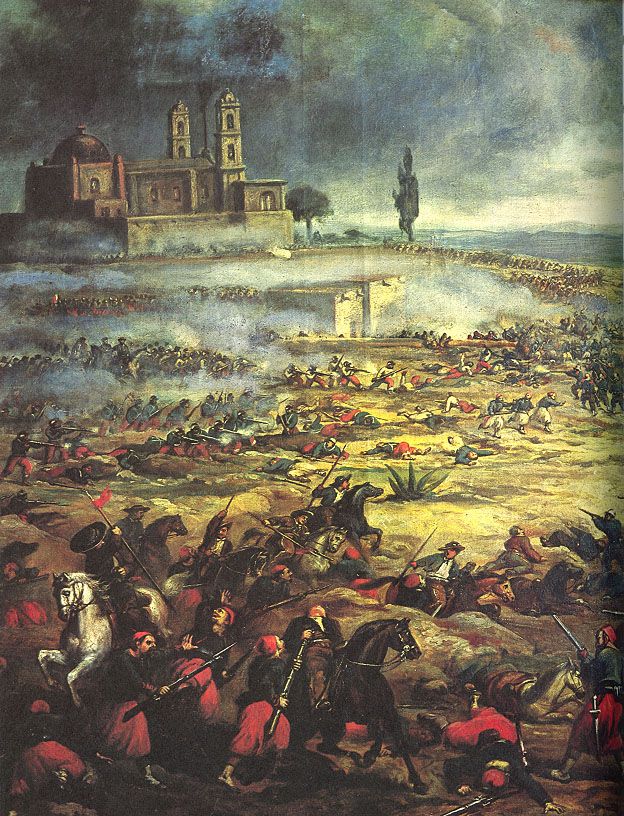Pondering the Pundits” is an Open Thread. It is a selection of editorials and opinions from around the news media and the internet blogs. The intent is to provide a forum for your reactions and opinions, not just to the opinions presented, but to what ever you find important.
Thanks to ek hornbeck, click on the link and you can access all the past “Pondering the Pundits”.
Follow us on Twitter @StarsHollowGzt
Amanda Marcotte: Donald Trump is bored: He wants to move on from this pandemic — just as it hits swing states
There’s no grand political strategy here — Trump’s tired of this virus and wants to get back to trolling his foes
In March, after months of ignoring the looming threat of the novel coronavirus, Donald Trump decided to recast himself in a new role, declaring he was now a “wartime president,” clearly imagining himself in the mold of FDR or, more likely, as Bill Pullman’s presidential character in the 1996 film “Independence Day.”
This was a total joke from the beginning, as Trump’s behavior wasn’t hard to predict. As a sociopath and narcissist, Trump would enjoy a stint play-acting as president while doing nothing. But when it began to dawn on him that waging war is like, hard work, he would just drift away, letting the “war” effort fail.
Unsurprisingly, that is what exactly happened. As Heather Digby Parton explains in her Wednesday column for Salon, what has “become clear in the last few days is that the Trump administration has made a decision” to give up any semblance of trying to flatten the curve, stop the spread or do anything meaningful to defeat the coronavirus.
Instead, Parton writes, Trump and his advisers “have apparently decided to let the virus ‘wash over the country’ as Trump wanted to do from the beginning.” [..]
Trump made that clear in his press conference Tuesday, telling reporters, “We can’t keep our country closed for the next five years” (which exactly no one was proposing).
When asked about all the people who will die as part of this “reopening,” Trump implied that Americans will be happy to die for his cause, because they’re “warriors.”
Trump has clearly talked himself into the belief that the economy will come roaring back to life as soon as lockdown restrictions are lifted, which is utterly ludicrous. Between the certain further spread of the virus itself and the existing damage to the economy, things aren’t getting better anytime soon.
Bryce Covert: It’s OK to Not Be a Perfect Quarantine Employee
We’re all rightfully cutting ourselves some slack on the parenting front. So why aren’t we and our employers doing the same when it comes to work?
With schools and day care programs closed, working parents are starting to crack. In an attempt to ease that pressure, there have been a number of essays telling parents to go easy on themselves. “Now Is the Perfect Time to Lower the Parenting Bar,” Kimberly Harrington wrote at The Cut. “Quarantine Parenting Doesn’t Have to Be Perfect,” the New York Times writer Elizabeth Bruenig reassured her fellow parents.
You’re doing the best you can, these essays tell us — our children will come out healthy and whole on the other end of this, whenever that will be.
It’s true. Our children will survive without a well-orchestrated activity for every spare moment, or with a couple of extra hours of screen time each week (or, let’s face it, a couple of extra hours a day). But amid all the articles reminding us that we don’t have to be perfect parents during lockdown, where are the essays letting us know that we don’t have to be perfect employees? Why are so many of us still maintaining the fiction that we are all as competent at our jobs as we were before the virus hit our shores?
It’s extremely telling where we’ve decided it’s OK to cut ourselves some slack, and where we seem to be continuing as if there weren’t a global crisis of historic proportions.
Family and personal life always takes second place to work in this country. It’s untenable most of the time, but it’s absolutely unreasonable right now. We are still somehow expected to get the same amount of work done as when we spent eight or more hours in an office without homebound children and a pandemic to distract us.
This is lunacy. Keeping output steady while maintaining our physical and mental health just cannot be done. We have to work less, and employers have to get on board.
Katrina vanden Heuvel: The pandemic has made the Poor People’s Campaign virtual — and vital
“May we who are merely inconvenienced remember those whose lives are at stake. May we who have no risk factors remember those most vulnerable. May we have the necessary righteous indignation in this moment to fight for transformation.” Those words were part of a prayer that the Rev. William J. Barber II offered last week to a virtual meeting for readers of the Nation magazine (where I am publisher and editorial director). With his deep baritone, Barber’s moral clarity cut through the distance of the Internet. As the human toll reaped by the pandemic and the deepening economic depression grows, the call for fundamental change — for a new New Deal — gets louder. Whether we can summon up the vision and the leadership for that remains uncertain. What is clear is that Barber and the Poor People’s Campaign that he and his colleagues have been mobilizing over the past two years will galvanize a movement.
More than two years ago, Barber took on the Rev. Martin Luther King Jr’s 1968 call for a “revolution of values” in America and revived King’s effort to build a poor people’s campaign across lines of race, religion and region. Long before the current catastrophe, the Poor People’s Campaign was challenging the “interlocking evils” of systemic racism, poverty, ecological devastation, militarism and “the distorted moral narrative” of religious nationalism.
Mobilizing around a call for moral revival, the Poor People’s Campaign has built more than 40 state committees, bringing together poor and low-income people — many now called “essential” workers, faith leaders and citizens of conscience. In state capitals across the country, they spurred the most expansive wave of nonviolent citizen disobedience since the civil rights movement, protesting the skewed priorities of state budgets, the racializing of voter suppression and the cruelty of our immigration system. The group put forth a Poor People’s Moral Budget laying out sensible priorities at the national level. The campaign’s original plan for this year was to bring millions to Washington on June 20 to empower the 140 million people living in poverty in America and lift up their voices. Now, the pandemic has turned that demonstration virtual — but made it even more vital.
Karen Tumulty: Save us all from Jared Kushner
Whenever a member of the Trump family gets involved with a project, it is always smart to keep an eye out for the grift.
We might have hoped that a pandemic that has already cost more than 70,000 Americans their lives would be an exception to this rule. But no. President Trump’s decision to again put his unqualified son-in-law, Jared Kushner, in charge of a team charged with a vital national security interest — this time, procuring crucial supplies and protective equipment for hospitals and others on the front lines of fighting the coronavirus — is producing the usual results: incompetence and cronyism.
Both The Post and the New York Times report that Kushner and a small team of inexperienced volunteers from the private sector have overridden career officials at the Federal Emergency Management Agency and are making a deadly crisis even deadlier with their amateur-hour bungling. The two newspapers — which no doubt will be denounced by the White House as “fake news” — based their accounts on a whistleblower memo written by one of the volunteers and interviews with government sources familiar with the effort. [..]
We are seeing now why government cannot, and should not, be run like a family business. In normal times, nepotism is merely corrupt. But at a moment such as the nightmare that we are all living through, it can be fatal.
Jennifer Rubin: Reopening the economy won’t avert a serious recession
President Trump and his band of obedient, red-state governors are determined to restart the economy despite the climbing death toll (more than 71,000). They imagine that if they open the doors of barbershops and movie theaters, the worst of the economic collapse might be averted. This is irrational for two key reasons.
First, the economy is sinking into a deep, structural recession that is unlikely to recede quickly. The Post reports: “U.S. companies shed 20.2 million jobs from their payrolls in April as the coronavirus pandemic brought the economy to a standstill and shuttered many of the country’s businesses. … April’s staggering number is the worst in the report’s history, which began in 2002, and is double the last record set in February 2009, during the Great Recession.” And that figure covers less than half of the month. [..]
In short, there is no evidence that major employers have bought into the hype that the economy will be back in high gear in a month or so. If reopening was supposed to generate a sense of normalcy and induce employers to bring back their employees, it is not working.
The second reason — the duration of the pandemic — is an even bigger barrier to Trump’s economic revival. The Associated Press reports: “New confirmed infections per day in the U.S. exceed 20,000, and deaths per day are well over 1,000, according to figures from Johns Hopkins University. And public health officials warn that the failure to flatten the curve and drive down the infection rate in places could lead to many more deaths — perhaps tens of thousands — as people are allowed to venture out and businesses reopen.” While extreme social-distancing measures have bent the curve in New York, the rest of the country has been going in the opposite direction: Take New York out of the equation and “the rate of new cases in the U.S. increased . . . from 6.2 per 100,000 people to 7.5.” [..]
In sum, the recession is well underway, and the pandemic shows no sign of abatement. The likely result of premature openings without a robust system for testing, tracking and isolating cases is more deaths — and further economic pain.
Leana S. Wen: As states reopen, here’s how you protect yourself from the coming surge
Leana S. Wen is an emergency physician and visiting professor at George Washington University Milken Institute School of Public Health. Previously, she served as Baltimore’s health commissioner.
The federal government’s social distancing guidelines ended last week. As states lift their shelter-in-place orders and reopen parts of their economies, I am deeply worried that the next phase of the coronavirus pandemic will bring much more suffering and many more preventable deaths. What should concerned policymakers and residents do? Two things:
First, prepare for a massive surge.
More than 40 states have announced plans to lift restrictions, even though only a handful have met the minimum criteria for reopening as outlined by the White House coronavirus task force. The consequences of this are all too predictable, because the science around covid-19 has not changed: Without a vaccine or cure, the only thing keeping the disease in check has been keeping people separated from one another. Once social distancing is relaxed, covid-19 will again spread with explosive speed. [..]
Now is also the time to fully implement pandemic response plans to shore up health-care capacity across the country. In addition, no state has yet set up the testing, contact tracing and quarantining needed to contain the virus. State and local officials should do their best to ramp up these public health capabilities as they call upon the federal government to put forth the national coordinated effort to secure needed supplies and staff.
Second, stay safe for yourself and for those around you.
Just because you now can go out in public doesn’t mean you should. This is not the time to plan family gatherings, dinner parties and play dates. Restaurants, retail shops and salons might be open, but is going worth the risk? [..]
It will be tempting to see reopening as a return to our way of life before the coronavirus, but it will be anything but. As a society, we have made the decision to reopen before the science says we are ready. We are knowingly going back to where we were in mid-March, before the first exponential surge in infections and deaths. That surge will come again, but this time no one can say they didn’t see it coming.



 It’s May and it’s getting warmer here in the northeast. Tomorrow is Cinquo de Mayo, the only battle that the Mexican army won in their war with the French. It’s
It’s May and it’s getting warmer here in the northeast. Tomorrow is Cinquo de Mayo, the only battle that the Mexican army won in their war with the French. It’s  This is the recipe I have used for years without complaints. I use 1800 Reposado Tequila, Rose’s Lime, Triple Sec, Kosher or course ground sea salt and fresh slices of lime. You’ll need either a shaker or a large glass filled with ice and a strainer and you’ll need lots of ice.
This is the recipe I have used for years without complaints. I use 1800 Reposado Tequila, Rose’s Lime, Triple Sec, Kosher or course ground sea salt and fresh slices of lime. You’ll need either a shaker or a large glass filled with ice and a strainer and you’ll need lots of ice.
Recent Comments